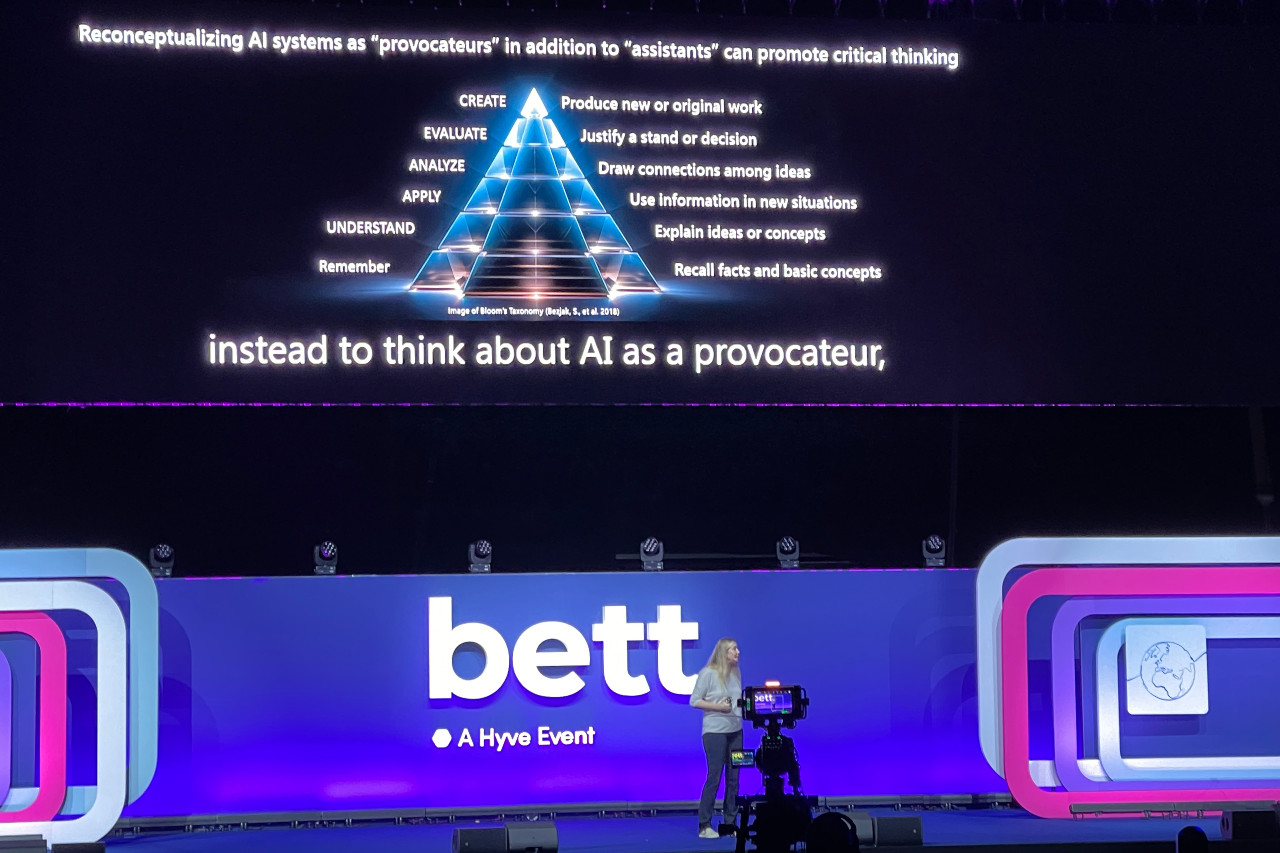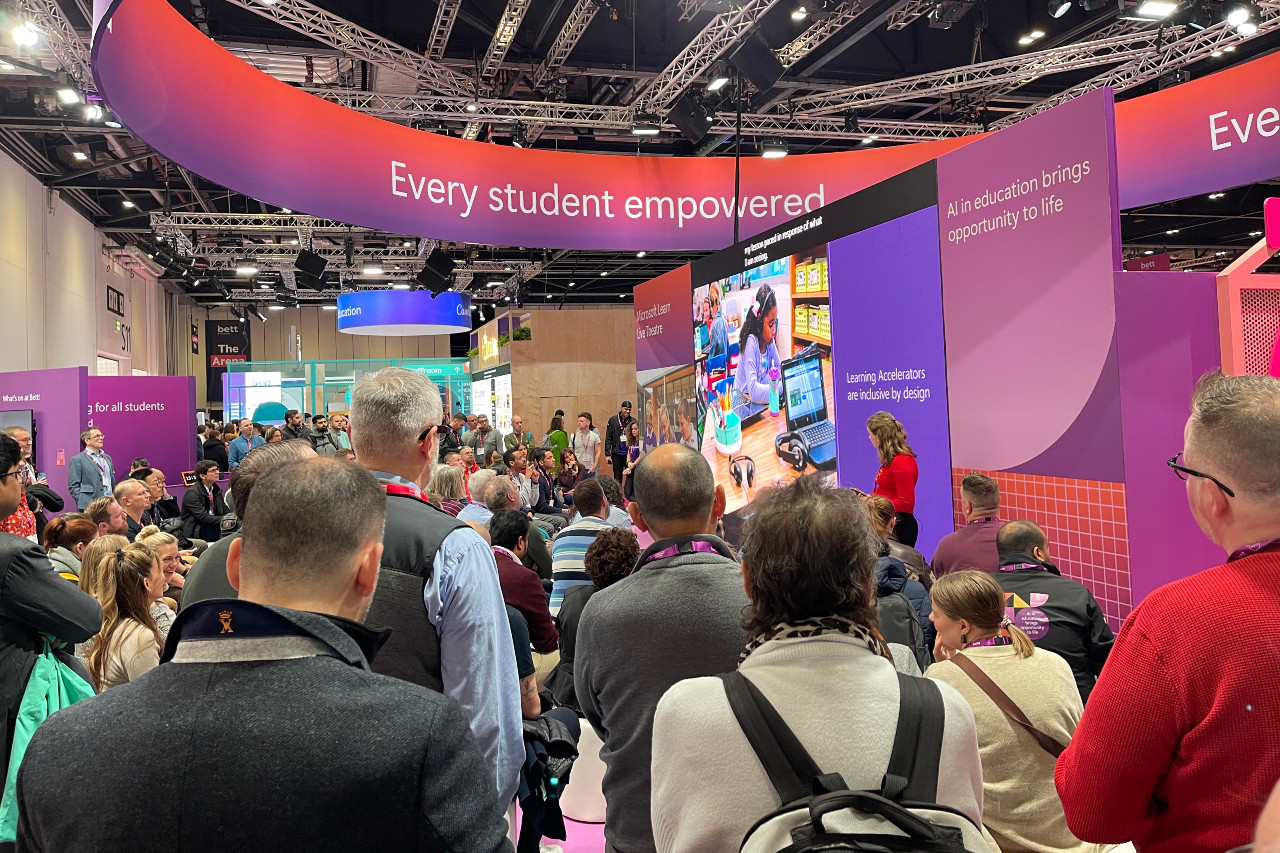
So, we have artificial intelligence and large language models like Chat GPT. But how are we going to apply them (wisely) in education? Artificial Intelligence was high on the agenda at Bett 2024 – as expected.
“BETT is primarily an exhibition for EdTech suppliers and thus also a barometer for the latest trends. Last year, surprisingly few people talked about AI. This year, “everything” was about AI,” says Atle Løkken, project manager for KnowHow EdTech.
Løkken is also department manager for the department for e-learning at the University of Stavanger. He stresses that the trends do not automatically represent what is a good use of EdTech for teaching purposes. This, we must be able to assess ourselves.
Lesson planning and curriculum development
“Among the more interesting developments was the use of AI for evaluations. This allows for fast and sufficient feedback to pupils and students. AI-generated learning material was another interesting trend, which potentially can save teachers’ time on administration,” Løkken says.
Several speakers pointed out how AI can be applied to ease the workload for teachers on tasks like:
- planning lessons
- developing questions, learning activities and assessments
- get a quicker overview of the entire student group’s progress
- alert the teacher about topics students find difficult
- flag students who are struggling
- draft feedback
The idea is that teachers will be able to do more of what they do best: teach!



Examples of this type of AI tools demonstrated at BETT
TeachMateAI – a closed curriculum-based AI system created by teachers.
Gen AI Module Writing Assistant – developed and used by the Open University
Goodnotes – pioneering generative AI for digital handwriting in the productivity space, and now also has a solution for schools
Microsoft at the forefront
Paolo H. Scarbocci is project manager for DDV – Didactic Digital Education Lab at the University of Stavanger, and shares his most important takeaways from BETT:
“We are now seeing a development where a form of dialogic learning support is created through artificial intelligence, for example with Microsoft’s Copilot, but where this type of functionality is also integrated as a resource in already existing digital technologies. This will mean that we can get a digital sparring and collaboration partner who can support us in all forms of work tasks,” he says and continues:
“In a school context, this means that students will be able to have their own professional conversation partner. In a classroom with 30 students, a teacher will hardly have more than one minute available per student during a school hour. Pupils will now be able to receive learning support throughout the class, with the help from AI,” Scarbocci explains.
Atle Løkken also points at Microsoft’s investments in the education sector as a major factor, especially with Copilot integrated into most tools.
“If we are talking about trends, the most apparent one is that Microsoft is going to be a leading player who will eventually also offer fully-fledged virtual learning environments, with Teams as the platform,” Løkken says.
Critical thinking will be essential
Applying AI to education does not mean that human tasks will be redundant in the future – rather the opposite.
“It will require us to be better equipped for critical thinking, source criticism, digital literacy and media literacy. Put simply, language and reading skills will become an absolutely essential competence in order to master and be able to get a good professional benefit from AI-based learning technologies. This was highlighted by some speakers but could probably have been a clearer message if more researchers were invited to speak at BETT,” Scarbocci concludes.


